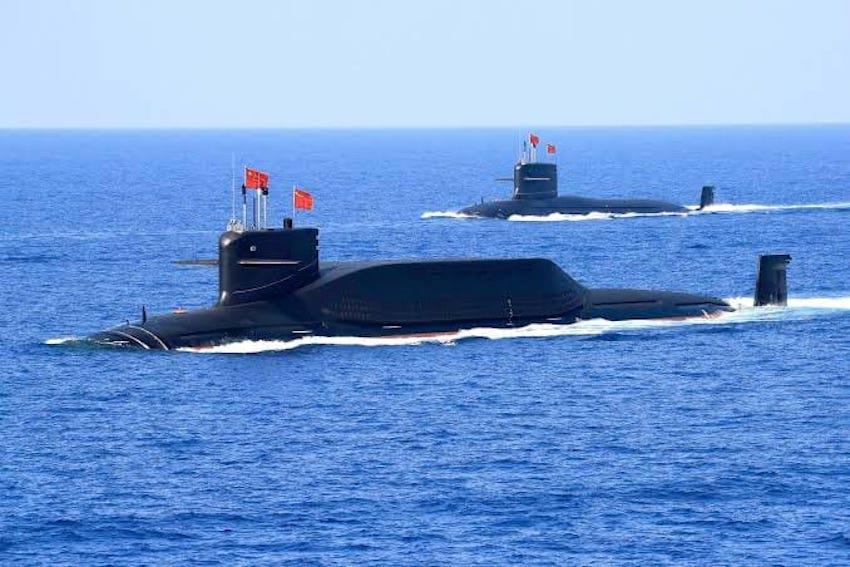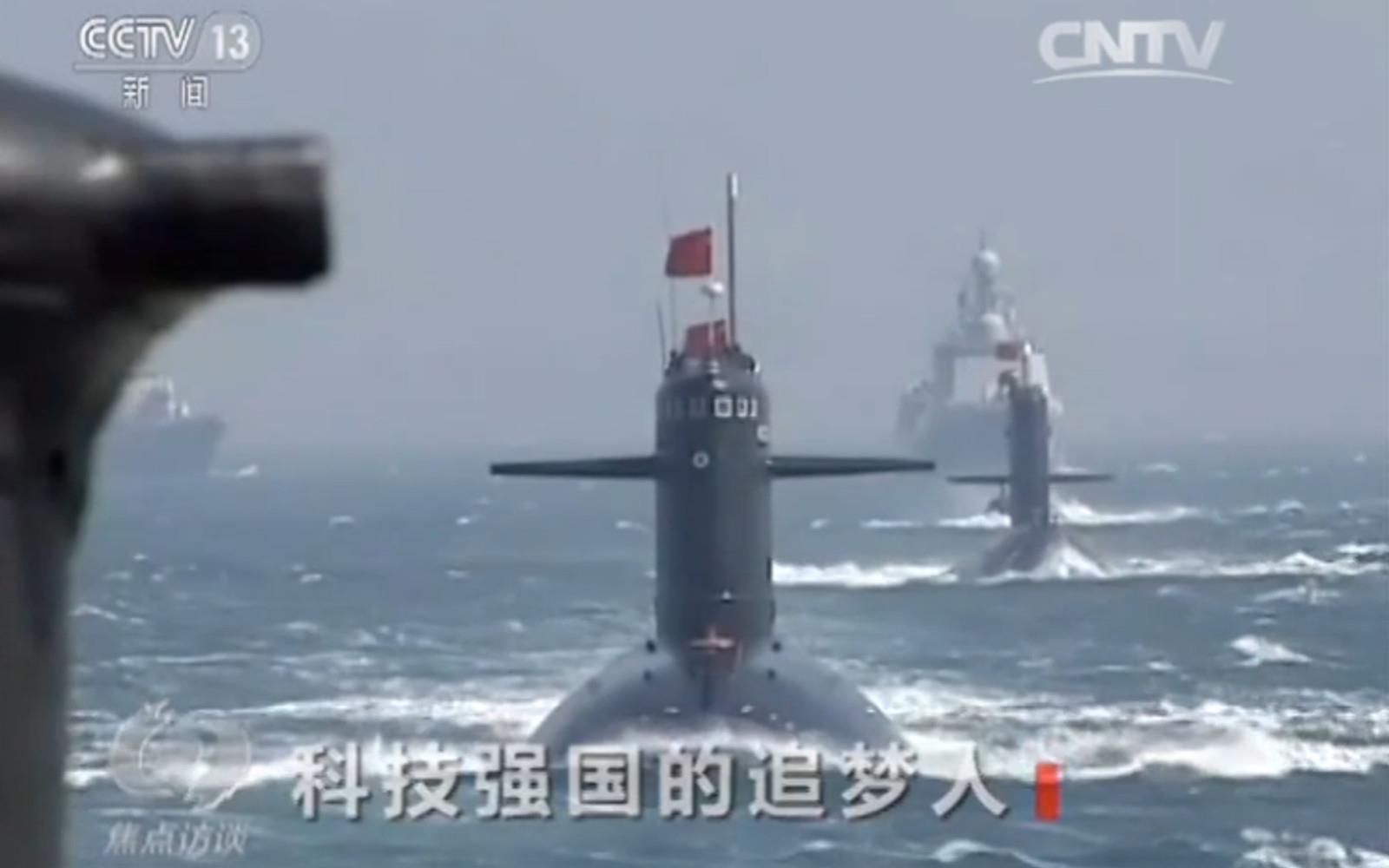(MENAFN- Asia Times)
China may have built a new class of nuclear-powered attack submarine (SSN), as shown by satellite imagery of Huludao Port in Northeast China taken from April until early this month.
The pictures show a nuclear attack submarine with a bigger and longer hull, with green covers on its stern covering its propulsion system, adding to speculation whether the type features pump-jet propulsion which is quieter than traditional propeller systems.
It is not clear whether the submarine is a new model, an upgrade of China's existing Type 093 nuclear attack submarines (SSN) or Type 094 nuclear ballistic missile submarines (SSBN), or something else completely, as the satellite photos were too limited to make any definitive identification.
At present, China operates six Type 093 SSNs and six Type 094 SSBNs. The Type 093 SSN can launch the YJ-18 anti-ship cruise missile, while the upgraded Type 094A SSBN is armed with vertically-launched JL-3 ballistic missiles that have a range of 10,000 kilometers and can strike the US mainland.
Chinese naval experts have different opinions regarding the new submarine. Beijing-based naval expert Li Jie stated that the images show that China's new submarine is larger than its existing Type 093 SSN, yet smaller than its Type 094 SSBN.
He also added that China has built upgraded variants of the Type 094 SSBN, and that the new submarine's bigger hull may be designed to accommodate vertical launch systems (VLS) tubes.
Another Beijing-based researcher, Zhou Chenming, speculates that the new submarine may be a powerful equivalent to the US Seawolf-class SSN, and a testbed for new nuclear propulsion technology for newer types of SSBNs, SSNs and even aircraft carriers.

China's submarine fleet is growing stronger in number and size. Photo: WikiCommons
Pentagon watching closely
A Pentagon report last year stated that by the mid-2020s, China will likely build the Type 093B SSN, which would enhance China's anti-surface warfare capability, and if equipped with land-attack cruise missiles (LACMs) could provide a clandestine land-attack option.
The report also states that China's next-generation Type 096 SSBN will be equipped with a new type of submarine-launched ballistic missile (SLBM) and likely begin construction in the 2020s.
As such, China's new submarine and future units may be tasked with protecting China's growing aircraft carrier force and its SSBN fleet. China aims to have its first nuclear-powered carrier by 2025 and ultimately have six carrier battle groups by 2035.
It may also contribute to the design of the Type 096 SSBN and be tasked to protect these strategic units. Another Pentagon report from 2020 states that China may operate eight Type 094 and Type 096 subs simultaneously by 2030.
The development of China's new SSN may tie into China's naval bastion strategy. The main goal of this strategy is to defend SSBNs and vital infrastructure with a form of layered defense, hinting that China does not intend to actively seek and destroy US and allied naval forces out in the open, but aims at protecting its own SSBN fleet from attack.
Under this strategy, China's SSBNs would remain safe within its protected coastal waters and would only seek to break out into the Pacific in a crisis scenario so their SLBMs would be able to reach the US mainland.
This entails conducting sea denial operations within the East China Sea and South China Sea and increasing its maritime situational awareness by adding radar sites, shore-based anti-ship missiles, anti-aircraft missile systems, alongside establishing air and naval bases to form a protective layer within those areas' littorals.
Such a strategy also shows that China prefers deploying its SSBNs in such bastions, rather than pursuing open water patrols with them.
Starting in the late 2000s, China has upgraded its facilities in the East China Sea , expanding its Xiangshan naval base with an underground submarine tunnel and its Dinghai and Zhoushan bases with several piers and repair facilities.

Conventional Chinese submarines. Source: China Network Television
Bases upgraded
China has also upgraded its Danyang naval air base with runway improvements for H-6 bombers, with similar improvements at other bases such as Longtian and Huian.
While the expansion of these bases is no doubt in preparation for a Taiwan contingency, they also serve to secure China's access to the Miyako Strait, as warships from China's East Sea Fleet rely on the strait as their main passage to the Pacific Ocean.
The strategic importance of the Miyako Strait is further highlighted by the recent deployments of advanced US warships to Japan , ostensibly to deter a Chinese naval envelopment of Taiwan from the north and to hunt down its SSBNs in case of a breakout attempt.
China's new SSNs may escort its SSBNs if they must make a dash into the Pacific to launch their SLBMs.
In a similar fashion, improvements to China's Yulin naval base in Hainan during the same time frame hint at its strategic value as the home port of China's SSBNs in the South China Sea.
Yulin naval base's formidable geography, coupled with extensive man-made defenses such as shore-based anti-ship missiles and anti-aircraft missile systems, makes it an ideal area to host China's undersea nuclear deterrent.
Also, Yulin reportedly hosts a cavernous underground submarine base capable of housing up to 20 nuclear subs, which include the Type 093 and Type 094, and in the future newer types such as the Type 093B SSN and Type 096 SSBN.
This hints that China is considering the South China Sea as a heavily defended patrol area for its SSBNs and SSNs. Its northern and central parts are considered deep enough for large submarines to operate within, with the temperature, salinity and extensive maritime traffic in the area helping to shield them from detection.
Moreover, China's SSBNs in the area can be defended by naval and air units from the South Sea Fleet, recently militarized features and its new class of SSNs, turning the South China Sea into another bastion for China's undersea nuclear deterrent.
MENAFN16052022000159011032ID1104220175
Legal Disclaimer:
MENAFN provides the information “as is” without warranty of any kind. We do not accept any responsibility or liability for the accuracy, content, images, videos, licenses, completeness, legality, or reliability of the information contained in this article. If you have any complaints or copyright issues related to this article, kindly contact the provider above.